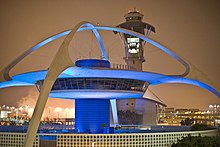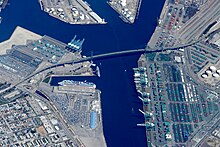The Benefits of Hiring a Professional Chauffeured Service in Los Angeles
Los Angeles is a bustling city with many attractions and events happening all the time. From Hollywood to Beverly Hills, from business meetings to special events, there's always something going on. Whether you're a local or a visitor, getting around Los Angeles can be a challenge. That's where a professional chauffeured service can make all the difference. Here are some of the benefits of hiring a professional chauffeured service in Los Angeles:
-
Convenience and Comfort One of the most significant benefits of hiring a professional chauffeured service is the convenience and comfort it provides. You won't have to worry about navigating traffic or finding parking. Instead, you can sit back and relax in a luxurious vehicle while a professional chauffeur takes care of everything. With amenities such as Wi-Fi, entertainment systems, and refreshments, you can also stay connected and comfortable during your ride.
-
Safety and Reliability Professional chauffeured services hire experienced drivers who have been trained to provide safe and reliable transportation. This means that you can feel confident that you'll arrive at your destination on time and in style. Plus, the vehicles are well-maintained, and the drivers are knowledgeable about the city's roads, so you won't have to worry about getting lost or delayed.
-
Professionalism and Flexibility When you hire a professional chauffeured service, you'll experience a level of professionalism and flexibility that you won't get from a regular taxi or ridesharing service. Whether you need transportation for a special event, corporate meeting, or airport transfer, a professional chauffeured service can customize their services to meet your needs. From selecting the perfect vehicle to providing a customized itinerary, you can count on a professional chauffeured service to go above and beyond to ensure your satisfaction.
-
Cost-Effective Hiring a professional chauffeured service may seem more expensive than other transportation options, but it can actually be cost-effective in the long run. With a chauffeured service, you won't have to worry about parking fees, tolls, or fuel costs. Plus, you can avoid the stress of navigating the city's busy streets, which can save you time and headaches.
At TRAVELUX LAX, we offer professional chauffeured services for all occasions in Los Angeles, from airport transfers to hourly as-directed services. With our fleet of luxurious vehicles and experienced drivers, you can trust us to provide you with the ultimate transportation experience. Contact us today to learn more about our services and how we can customize them to meet your specific needs.
Traveling to and from the airport can be a stressful experience, especially in a busy city like Los Angeles. Between traffic, parking, and navigating through unfamiliar neighborhoods, it's no wonder that many people prefer to hire a professional chauffeured service to take care of their airport transportation needs. Here are some reasons why you might consider using a professional chauffeured service for your next trip to or from the airport:
-
Convenience and comfort: With a professional chauffeured service, you can relax in the back of a luxurious black car while your driver takes care of everything else. You won't have to worry about traffic, parking, or navigating unfamiliar roads, and you can sit back and enjoy the ride. Plus, many chauffeured services offer additional amenities such as Wi-Fi, refreshments, and newspapers to make your ride even more comfortable.
-
Reliable service: When you hire a professional chauffeured service for your airport transportation, you can be sure that your driver will arrive on time and take you to your destination safely and efficiently. Professional chauffeurs are trained to handle traffic and road conditions, and they have extensive knowledge of the local area, so you can avoid getting lost or delayed.
-
Flexible scheduling: With a professional chauffeured service, you can schedule your airport transportation to fit your specific needs. Whether you need to leave early in the morning or arrive late at night, a professional chauffeur can accommodate your schedule and make sure that you get to your destination on time.
-
Cost-effective: While it may seem like hiring a professional chauffeured service is more expensive than other transportation options, it can actually be a cost-effective choice in the long run. You won't have to worry about paying for parking or tolls, and you can avoid the hassle and expense of renting a car or taking a taxi.
-
Meet and greet service: Many professional chauffeured services offer a meet and greet service for airport arrivals, where your driver will meet you at the airport and help you with your luggage. This can be especially helpful if you're traveling with a lot of bags or if you're in a hurry to get to your destination.
When it comes to professional chauffeured services in Los Angeles, Travelux is a top choice for airport transportation. We offer luxurious black SUVs, courteous and knowledgeable chauffeurs, and a top-notch communication system to make your airport transportation experience as comfortable and stress-free as possible. Whether you're flying into LAX, Hollywood Burbank Airport, Van Nuys Airport, or any other airport in the Los Angeles area, we've got you covered. Contact us today to learn more about our services and to schedule your airport transportation.
Los Angeles officially the City of Los Angeles and often abbreviated as L.A., is the largest city in California. With an estimated population of nearly four million people, it is the second most populous city in the United States (after New York City) and the third most populous city in North America (after Mexico City and New York City). Los Angeles is known for its Mediterranean climate, ethnic diversity, Hollywood entertainment industry, and its sprawling metropolis.
Los Angeles lies in a basin in Southern California, adjacent to the Pacific Ocean, with mountains as high as 10,000 feet (3,000 m), and deserts. The city, which covers about 469 square miles (1,210 km2), is the seat of Los Angeles County, the most populous county in the United States. The Los Angeles metropolitan area (MSA) is home to 13.1 million people, making it the second-largest metropolitan area in the nation after New York. Greater Los Angeles includes metro Los Angeles as well as the Inland Empire and Ventura County. It is the second most populous U.S. combined statistical area, also after New York, with a 2015 estimate of 18.7 million people.
Home to the Chumash and Tongva, the area that became Los Angeles was claimed by Juan Rodríguez Cabrillo for Spain in 1542. The city was founded on September 4, 1781, under Spanish governor Felipe de Neve, on the village of Yaanga. It became a part of Mexico in 1821 following the Mexican War of Independence. In 1848, at the end of the Mexican–American War, Los Angeles and the rest of California were purchased as part of the Treaty of Guadalupe Hidalgo, and thus became part of the United States. Los Angeles was incorporated as a municipality on April 4, 1850, five months before California achieved statehood. The discovery of oil in the 1890s brought rapid growth to the city. The city was further expanded with the completion of the Los Angeles Aqueduct in 1913, which delivers water from Eastern California.
Los Angeles has a diverse economy and hosts businesses in a broad range of professional and cultural fields. It also has the busiest container port in the Americas. The Los Angeles metropolitan area also has a gross metropolitan product of $1.0 trillion (as of 2017), making it the third-largest city by GDP in the world, after the Tokyo and New York City metropolitan areas. Los Angeles hosted the 1932 and 1984 Summer Olympics and will host the 2028 Summer Olympics.
Geography
Topography
The city of Los Angeles covers a total area of 502.7 square miles (1,302 km2), comprising 468.7 square miles (1,214 km2) of land and 34.0 square miles (88 km2) of water. The city extends for 44 miles (71 km) north-south and for 29 miles (47 km) east-west. The perimeter of the city is 342 miles (550 km).
Los Angeles is both flat and hilly. The highest point in the city proper is Mount Lukens at 5,074 ft (1,547 m), located at the northeastern end of the San Fernando Valley. The eastern end of the Santa Monica Mountains stretches from Downtown to the Pacific Ocean and separates the Los Angeles Basin from the San Fernando Valley. Other hilly parts of Los Angeles include the Mt. Washington area north of Downtown, eastern parts such as Boyle Heights, the Crenshaw district around the Baldwin Hills, and the San Pedro district.
Surrounding the city are much higher mountains. Immediately to the north lie the San Gabriel Mountains, which is a popular recreation area for Angelenos. Its high point is Mount San Antonio, locally known as Mount Baldy, which reaches 10,064 feet (3,068 m). Further afield, the highest point in the Greater Los Angeles area is San Gorgonio Mountain, with a height of 11,503 feet (3,506 m).
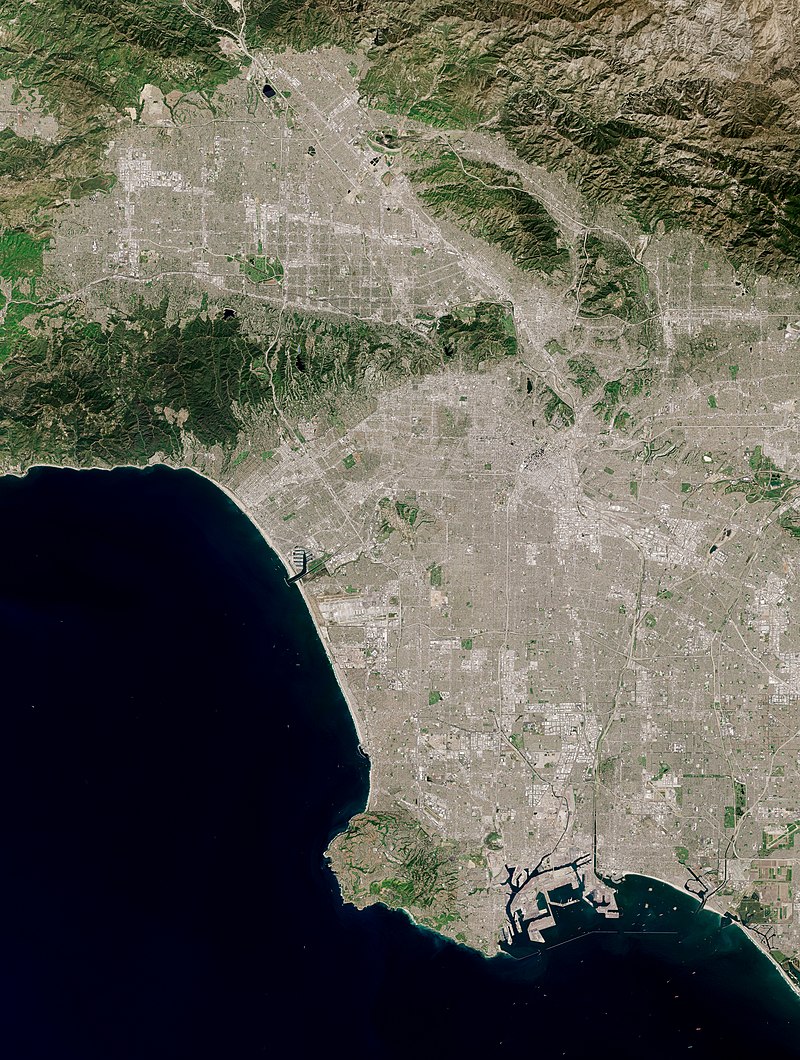
The Los Angeles River, which is largely seasonal, is the primary drainage channel. It was straightened and lined in 51 miles (82 km) of concrete by the Army Corps of Engineers to act as a flood control channel. The river begins in the Canoga Park district of the city, flows east from the San Fernando Valley along the north edge of the Santa Monica Mountains, and turns south through the city center, flowing to its mouth in the Port of Long Beach at the Pacific Ocean. The smaller Ballona Creek flows into the Santa Monica Bay at Playa del Rey.
Vegetation
Los Angeles is rich in native plant species partly because of its diversity of habitats, including beaches, wetlands, and mountains. The most prevalent plant communities are coastal sage scrub, chaparral shrubland, and riparian woodland. Native plants include: the California poppy, matilija poppy, toyon, Ceanothus, Chamise, Coast Live Oak, sycamore, willow and Giant Wildrye. Many of these native species, such as the Los Angeles sunflower, have become so rare as to be considered endangered. Although it is not native to the area, the official tree of Los Angeles is the Coral Tree (Erythrina caffra) and the official flower of Los Angeles is the Bird of Paradise (Strelitzia reginae). Mexican Fan Palms, Canary Island Palms, Queen Palms, Date Palms, and California Fan Palms are common in the Los Angeles area, although only the last is native.
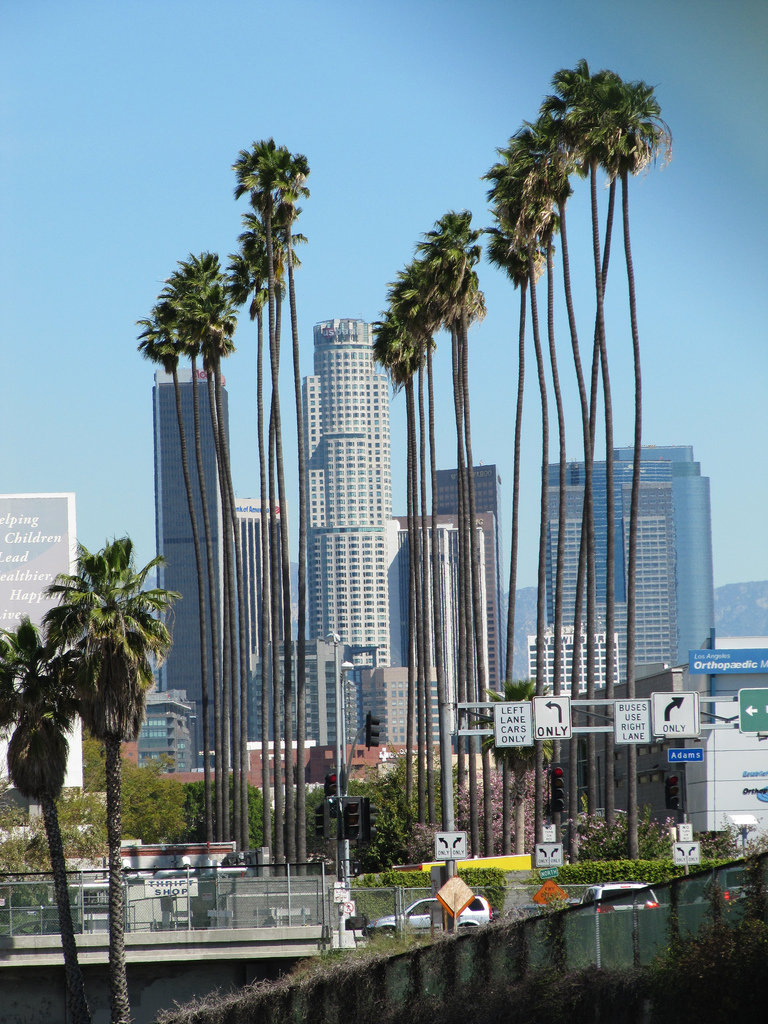
Geology
Los Angeles is subject to earthquakes because of its location on the Pacific Ring of Fire. The geologic instability has produced numerous faults, which cause approximately 10,000 earthquakes annually in Southern California, though most of them are too small to be felt. The strike-slip San Andreas Fault system, which sits at the boundary between the Pacific Plate and the North American Plate, passes through the Los Angeles metropolitan area. The segment of the fault passing through Southern California experiences a major earthquake roughly every 110 to 140 years, and seismologists have warned about the next "big one", as the last major earthquake was the 1857 Fort Tejon earthquake. The Los Angeles basin and metropolitan area are also at risk from blind thrust earthquakes. Major earthquakes that have hit the Los Angeles area include the 1933 Long Beach, 1971 San Fernando, 1987 Whittier Narrows, and the 1994 Northridge events. All but a few are of low intensity and are not felt. The USGS has released the UCERF California earthquake forecast, which models earthquake occurrence in California. Parts of the city are also vulnerable to tsunamis; harbor areas were damaged by waves from Aleutian Islands earthquake in 1946, Valdivia earthquake in 1960, Alaska earthquake in 1964, Chile earthquake in 2010 and Japan earthquake in 2011.
Cityscape
The city is divided into many different districts and neighborhoods, some of which were incorporated cities that merged with Los Angeles. These neighborhoods were developed piecemeal, and are well-defined enough that the city has signage marking nearly all of them.
Overview
The city's street patterns generally follow a grid plan, with uniform block lengths and occasional roads that cut across blocks. However, this is complicated by rugged terrain, which has necessitated having different grids for each of the valleys that Los Angeles covers. Major streets are designed to move large volumes of traffic through many parts of the city, many of which are extremely long; Sepulveda Boulevard is 43 miles (69 km) long, while Foothill Boulevard is over 60 miles (97 km) long, reaching as far east as San Bernardino. Drivers in Los Angeles suffer from one of the worst rush hour periods in the world, according to an annual traffic index by navigation system maker, TomTom. LA drivers spend an additional 92 hours in traffic each year. During the peak rush hour there is 80% congestion, according to the index.
Los Angeles is often characterized by the presence of low-rise buildings. Outside of a few centers such as Downtown, Warner Center, Century City, Koreatown, Miracle Mile, Hollywood, and Westwood, skyscrapers and high-rise buildings are not common. The few skyscrapers built outside of those areas often stand out above the rest of the surrounding landscape. Most construction is done in separate units, rather than wall-to-wall. That being said, Downtown Los Angeles itself has many buildings over 30 stories, with fourteen over 50 stories, and two over 70 stories, the tallest of which is the Wilshire Grand Center. Also, Los Angeles is increasingly becoming a city of apartments rather than single family dwellings, especially in the dense inner city and Westside neighborhoods.
Landmarks
Important landmarks in Los Angeles include the Hollywood Sign, Walt Disney Concert Hall, Capitol Records Building, the Cathedral of Our Lady of the Angels, Angels Flight, Grauman's Chinese Theatre, Dolby Theatre, Griffith Observatory, Getty Center, Getty Villa, Stahl House, the Los Angeles Memorial Coliseum, L.A. Live, the Los Angeles County Museum of Art, the Venice Canal Historic District and boardwalk, Theme Building, Bradbury Building, U.S. Bank Tower, Wilshire Grand Center, Hollywood Boulevard, Los Angeles City Hall, Hollywood Bowl, Battleship USS Iowa, Watts Towers, Staples Center, Dodger Stadium, and Olvera Street.
Climate
Los Angeles has a Mediterranean climate (Köppen Csb on the coast and most of downtown, Csa near the metropolitan region to the west), and receives just enough annual precipitation to avoid semi-arid climate (BSh), Daytime temperatures are generally temperate all year round. In winter, they average around 68 °F (20 °C) giving it a tropical feel although it is a few degrees too cool to be a true tropical climate on average due to cool night temperatures. Los Angeles has plenty of sunshine throughout the year, with an average of only 35 days with measurable precipitation annually.
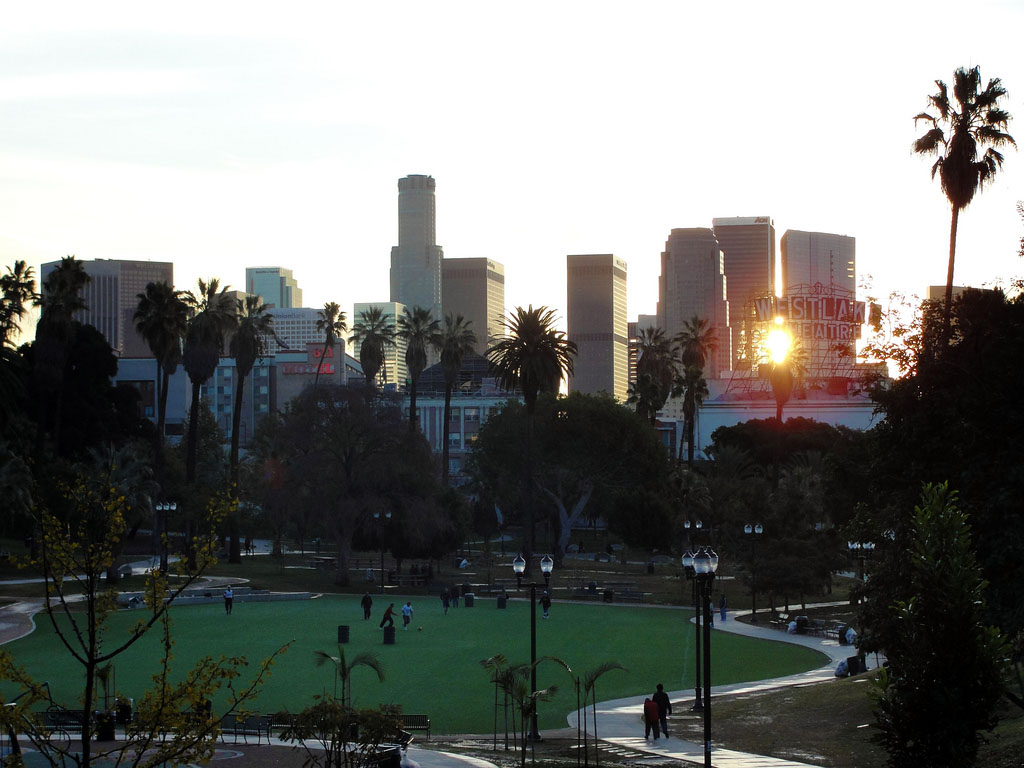
Temperatures in the coastal basin exceed 90 °F (32 °C) on a dozen or so days in the year, from one day a month in April, May, June and November to three days a month in July, August, October and to five days in September. Temperatures in the San Fernando and San Gabriel Valleys are considerably warmer. Temperatures are subject to substantial daily swings; in inland areas the difference between the average daily low and the average daily high is over 30 °F (17 °C). The average annual temperature of the sea is 63 °F (17 °C), from 58 °F (14 °C) in January to 68 °F (20 °C) in August. Hours of sunshine total more than 3,000 per year, from an average of 7 hours of sunshine per day in December to an average of 12 in July.
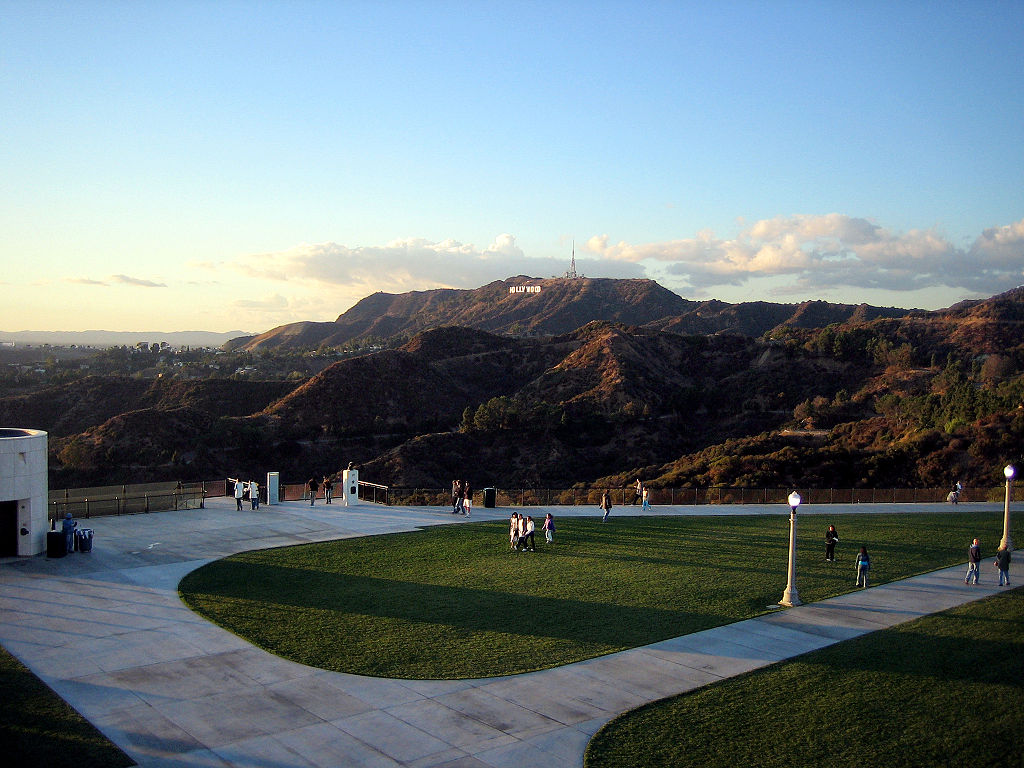
The Los Angeles area is also subject to phenomena typical of a microclimate, causing extreme variations in temperature in close physical proximity to each other. For example, the average July maximum temperature at the Santa Monica Pier is 70 °F (21 °C) whereas it is 95 °F (35 °C) in Canoga Park, 15 miles (24 km) away. The city, like much of the southern California coast, is subject to a late spring/early summer weather phenomenon called "June Gloom". This involves overcast or foggy skies in the morning that yield to sun by early afternoon.
Downtown Los Angeles averages 14.93 in (379 mm) of precipitation annually, mainly occurring between November and March, generally in the form of moderate rain showers, but sometimes as heavy rainfall during winter storms. Rainfall is usually higher in the hills and coastal slopes of the mountains because of orographic uplift. Summer days are usually rainless. Rarely, an incursion of moist air from the south or east can bring brief thunderstorms in late summer, especially to the mountains. The coast gets slightly less rainfall, while the inland and mountain areas get considerably more. Years of average rainfall are rare. The usual pattern is year to year variability, with a short string of dry years of 5–10 in (130–250 mm) rainfall, followed by one or two wet years with more than 20 in (510 mm). Wet years are usually associated with warm water El Niño conditions in the Pacific, dry years with cooler water La Niña episodes. A series of rainy days can bring floods to the lowlands and mudslides to the hills, especially after wildfires have denuded the slopes.
Both freezing temperatures and snowfall are extremely rare in the city basin and along the coast, with the last occurrence of a 32 °F (0 °C) reading at the downtown station being January 29, 1979; freezing temperatures occur nearly every year in valley locations while the mountains within city limits typically receive snowfall every winter. The greatest snowfall recorded in downtown Los Angeles was 2.0 inches (5 cm) on January 15, 1932. While the most recent snowfall occurred in February 2019, the first snowfall since 1962, with snow falling in areas adjacent to Los Angeles as recently as January 2021. At the official downtown station, the highest recorded temperature is 113 °F (45 °C) on September 27, 2010, while the lowest is 28 °F (−2 °C), on January 4, 1949. Within the City of Los Angeles, the highest temperature ever officially recorded is 121 °F (49 °C), on September 6, 2020, at the weather station at Pierce College in the San Fernando Valley neighborhood of Woodland Hills. During autumn and winter, Santa Ana winds sometimes bring much warmer and drier conditions to Los Angeles, and raise wildfire risk.
Economy
The economy of Los Angeles is driven by international trade, entertainment (television, motion pictures, video games, music recording, and production), aerospace, technology, petroleum, fashion, apparel, and tourism. Other significant industries include finance, telecommunications, law, healthcare, and transportation. In the 2017 Global Financial Centres Index, Los Angeles was ranked as having the 19th most competitive financial center in the world, and sixth most competitive in United States (after New York City, San Francisco, Chicago, Boston, and Washington, D.C.).
One of the five major film studios, Paramount Pictures, is within the city limits, its location being part of the so-called "Thirty-Mile Zone" of entertainment headquarters in Southern California.
Los Angeles is the largest manufacturing center in the United States. The contiguous ports of Los Angeles and Long Beach together comprise the busiest port in the United States by some measures and the fifth-busiest port in the world, vital to trade within the Pacific Rim.
The Los Angeles metropolitan area has a gross metropolitan product of $1.0 trillion (as of 2017), making it the third-largest economic metropolitan area in the world, after Tokyo and New York. Los Angeles has been classified an "alpha world city" according to a 2012 study by a group at Loughborough University.
The Department of Cannabis Regulation enforces cannabis legislation after the legalization of the sale and distribution of cannabis in 2016. As of October 2019, more than 300 existing cannabis businesses (both retailers and their suppliers) have been granted approval to operate in what is considered the nation's largest market.
As of 2018, Los Angeles is home to three Fortune 500 companies: AECOM, CBRE Group, and Reliance Steel & Aluminum Co.
Culture
Los Angeles is often billed as the "Creative Capital of the World", because one in every six of its residents works in a creative industry and there are more artists, writers, filmmakers, actors, dancers and musicians living and working in Los Angeles than any other city at any other time in history.
Movies and the performing arts
The city's Hollywood neighborhood has become recognized as the center of the motion picture industry and the Los Angeles area is also associated as being the center of the television industry. The city is home to the major film studios as well as major record labels. Los Angeles plays host to the annual Academy Awards, the Primetime Emmy Awards, the Grammy Awards as well as many other entertainment industry awards shows. Los Angeles is the site of the USC School of Cinematic Arts, the oldest film school in the United States.
The performing arts play a major role in Los Angeles's cultural identity. According to the USC Stevens Institute for Innovation, "there are more than 1,100 annual theatrical productions and 21 openings every week." The Los Angeles Music Center is "one of the three largest performing arts centers in the nation", with more than 1.3 million visitors per year. The Walt Disney Concert Hall, centerpiece of the Music Center, is home to the prestigious Los Angeles Philharmonic. Notable organizations such as Center Theatre Group, the Los Angeles Master Chorale, and the Los Angeles Opera are also resident companies of the Music Center. Talent is locally cultivated at premier institutions such as the Colburn School and the USC Thornton School of Music.
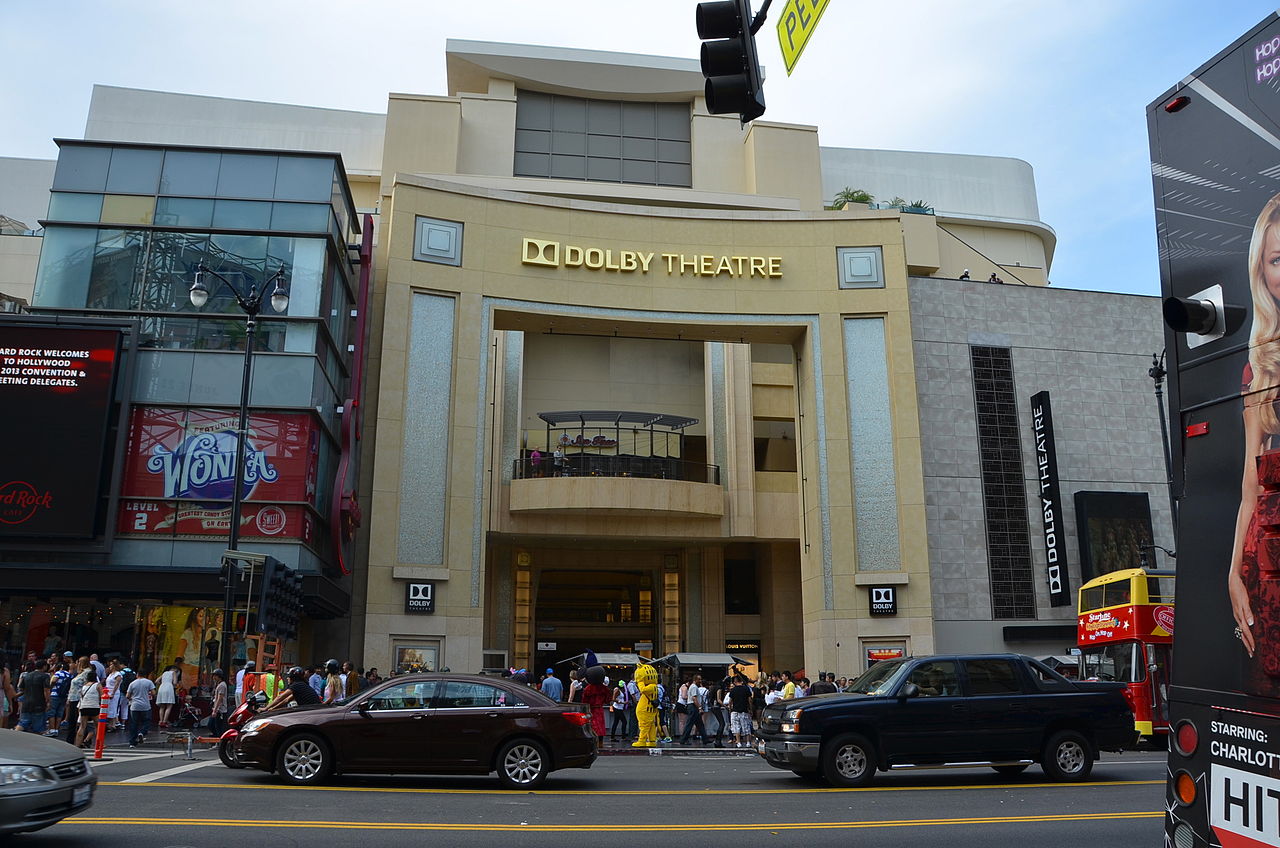
Museums and galleries
There are 841 museums and art galleries in Los Angeles County, more museums per capita than any other city in the U.S. Some of the notable museums are the Los Angeles County Museum of Art (the largest art museum in the Western United States), the Getty Center (part of the J. Paul Getty Trust, the world's wealthiest art institution), the Petersen Automotive Museum, the Huntington Library, the Natural History Museum, the Battleship Iowa, and the Museum of Contemporary Art. A significant number of art galleries are on Gallery Row, and tens of thousands attend the monthly Downtown Art Walk there.
Sports
The city of Los Angeles and its metropolitan area are the home of eleven top level professional sports teams, several of which play in neighboring communities but use Los Angeles in their name. These teams include the Los Angeles Dodgers and Los Angeles Angels of Major League Baseball (MLB), the Los Angeles Rams and Los Angeles Chargers of the National Football League (NFL), the Los Angeles Lakers and Los Angeles Clippers of the National Basketball Association (NBA), the Los Angeles Kings and Anaheim Ducks of the National Hockey League (NHL), the Los Angeles Galaxy and Los Angeles Football Club of Major League Soccer (MLS), and the Los Angeles Sparks of the Women's National Basketball Association (WNBA).
Other notable sports teams include the UCLA Bruins and the USC Trojans in the National Collegiate Athletic Association (NCAA), both of which are Division I teams in the Pac-12 Conference.
Los Angeles is the second-largest city in the United States but hosted no NFL team between 1995 and 2015. At one time, the Los Angeles area hosted two NFL teams: the Rams and the Raiders. Both left the city in 1995, with the Rams moving to St. Louis, and the Raiders moving back to their original home of Oakland. After 21 seasons in St. Louis, on January 12, 2016, the NFL announced the Rams would be moving back to Los Angeles for the 2016 NFL season with its home games played at the Los Angeles Memorial Coliseum for four seasons. Prior to 1995, the Rams played their home games in the Coliseum from 1946 to 1979 which made them the first professional sports team to play in Los Angeles, and then moved to Anaheim Stadium from 1980 until 1994. The San Diego Chargers announced on January 12, 2017 that they would also relocate back to Los Angeles (the first since its inaugural season in 1960) and become the Los Angeles Chargers beginning in the 2017 NFL season and played at Dignity Health Sports Park in Carson, California for three seasons. The Rams and the Chargers would soon moved to the newly built SoFi Stadium, located in nearby Inglewood during the 2020 season.
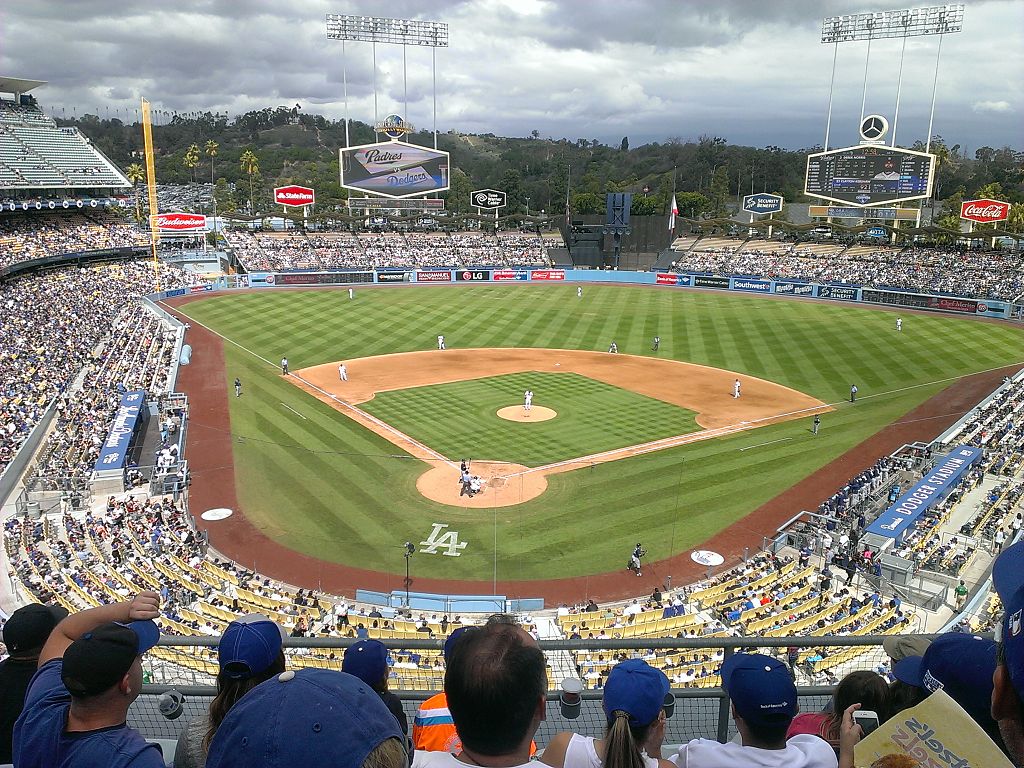
7 NFL Super Bowls were also held in the city and its surrounding areas- 2 at the Memorial Coliseum (the first Super Bowl, I and VII) and 5 at the Rose Bowl in suburban Pasadena (XI, XIV, XVII, XXI, and XXVII), 10 miles north of downtown Los Angeles. Super Bowl LVI will be held at SoFi Stadium in Inglewood in 2022. The Rose Bowl is also host to an annual and highly prestigious NCAA college football game called the Rose Bowl, which happens every New Year's Day.
Los Angeles also hosted 8 FIFA World Cup soccer games at the Rose Bowl in 1994, including the final, where Brazil won. The Rose Bowl also hosted 4 matches in the 1999 FIFA Women's World Cup, including the final, where the United States won against China on penalty kicks. This was the game where Brandi Chastain took her shirt off after she scored the tournament-winning penalty kick, creating an iconic image.
Los Angeles is one of six North American cities to have won championships in all five of its major leagues (MLB, NFL, NHL, NBA and MLS), having completed the feat with the Kings' 2012 Stanley Cup title.
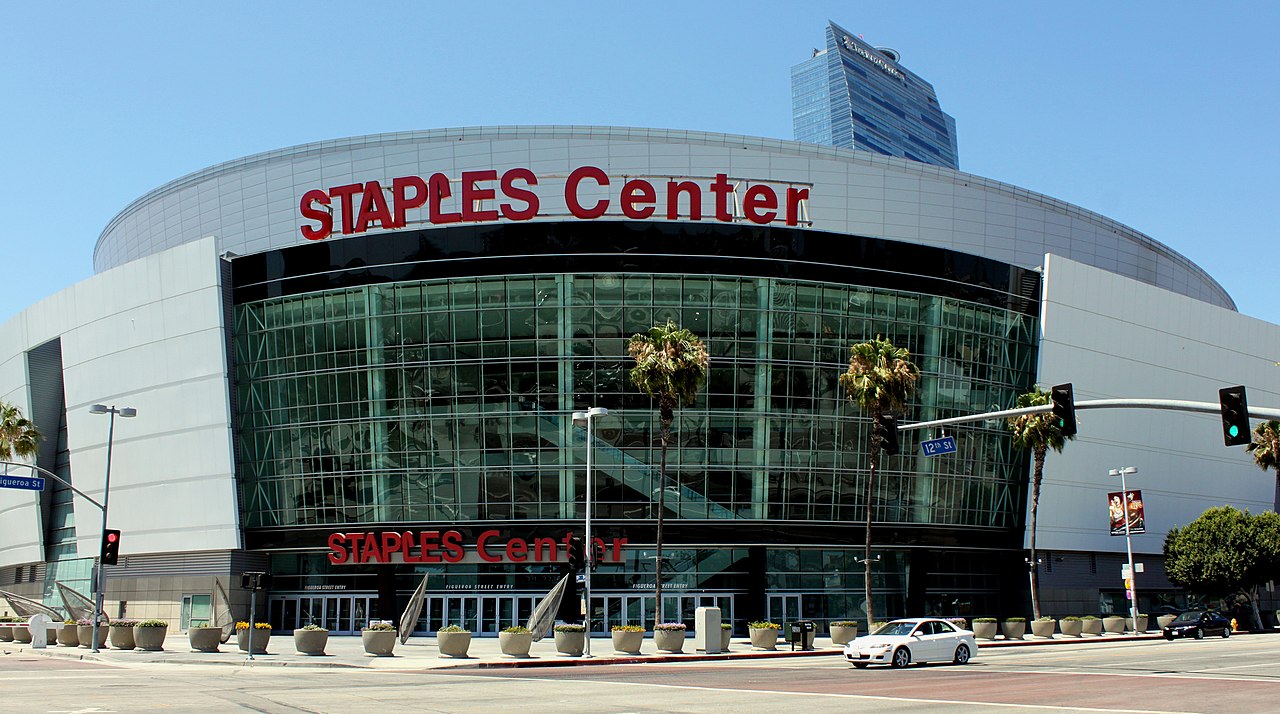
Government
Los Angeles is a charter city as opposed to a general law city. The current charter was adopted on June 8, 1999, and has been amended many times. The elected government consists of the Los Angeles City Council and the mayor of Los Angeles, which operate under a mayor–council government, as well as the city attorney (not to be confused with the district attorney, a county office) and controller. The mayor is Eric Garcetti. There are 15 city council districts.
The city has many departments and appointed officers, including the Los Angeles Police Department (LAPD), the Los Angeles Board of Police Commissioners, the Los Angeles Fire Department (LAFD), the Housing Authority of the City of Los Angeles (HACLA), the Los Angeles Department of Transportation (LADOT), and the Los Angeles Public Library (LAPL).
The charter of the City of Los Angeles ratified by voters in 1999 created a system of advisory neighborhood councils that would represent the diversity of stakeholders, defined as those who live, work or own property in the neighborhood. The neighborhood councils are relatively autonomous and spontaneous in that they identify their own boundaries, establish their own bylaws, and elect their own officers. There are about 90 neighborhood councils.
Residents of Los Angeles elect supervisors for the 1st, 2nd, 3rd, and 4th supervisorial districts.
Federal and state representation
In the California State Assembly, Los Angeles is split between fourteen districts. In the California State Senate, the city is split between eight districts. In the United States House of Representatives, it is split among ten congressional districts.
Education
Colleges and universities
There are three public universities within the city limits: California State University, Los Angeles (CSULA), California State University, Northridge (CSUN) and University of California, Los Angeles (UCLA).
Private colleges in the city include:
- American Film Institute Conservatory
- Alliant International University
- American Academy of Dramatic Arts (Los Angeles Campus)
- American Jewish University
- Abraham Lincoln University
- The American Musical and Dramatic Academy – Los Angeles campus
- Antioch University's Los Angeles campus
- Charles R. Drew University of Medicine and Science
- Columbia College Hollywood
- Emerson College (Los Angeles Campus)
- Emperor's College
- Fashion Institute of Design & Merchandising's Los Angeles campus (FIDM)
- Los Angeles Film School
- Loyola Marymount University (LMU is also the parent university of Loyola Law School in Los Angeles)
- Marymount College
- Mount St. Mary's College
- National University of California
- Occidental College ("Oxy")
- Otis College of Art and Design (Otis)
- Southern California Institute of Architecture (SCI-Arc)
- Southwestern Law School
- University of Southern California (USC)
- Woodbury University
-
The community college system consists of nine campuses governed by the trustees of the Los Angeles Community College District:
- East Los Angeles College (ELAC)
- Los Angeles City College (LACC)
- Los Angeles Harbor College
- Los Angeles Mission College
- Los Angeles Pierce College
- Los Angeles Valley College (LAVC)
- Los Angeles Southwest College,
- Los Angeles Trade-Technical College
- West Los Angeles College
-
-
- There are numerous additional colleges and universities outside the city limits in the Greater Los Angeles area, including the Claremont Colleges consortium, which includes the most selective liberal arts colleges in the U.S., and the California Institute of Technology (Caltech), one of the top STEM-focused research institutions in the world.
-
-
Schools and libraries
Los Angeles Unified School District serves almost all of the city of Los Angeles, as well as several surrounding communities, with a student population around 800,000. After Proposition 13 was approved in 1978, urban school districts had considerable trouble with funding. LAUSD has become known for its underfunded, overcrowded and poorly maintained campuses, although its 162 Magnet schools help compete with local private schools.
Several small sections of Los Angeles are in the Las Virgenes Unified School District. The Los Angeles County Office of Education operates the Los Angeles County High School for the Arts. The Los Angeles Public Library system operates 72 public libraries in the city. Enclaves of unincorporated areas are served by branches of the County of Los Angeles Public Library, many of which are within walking distance to residents.
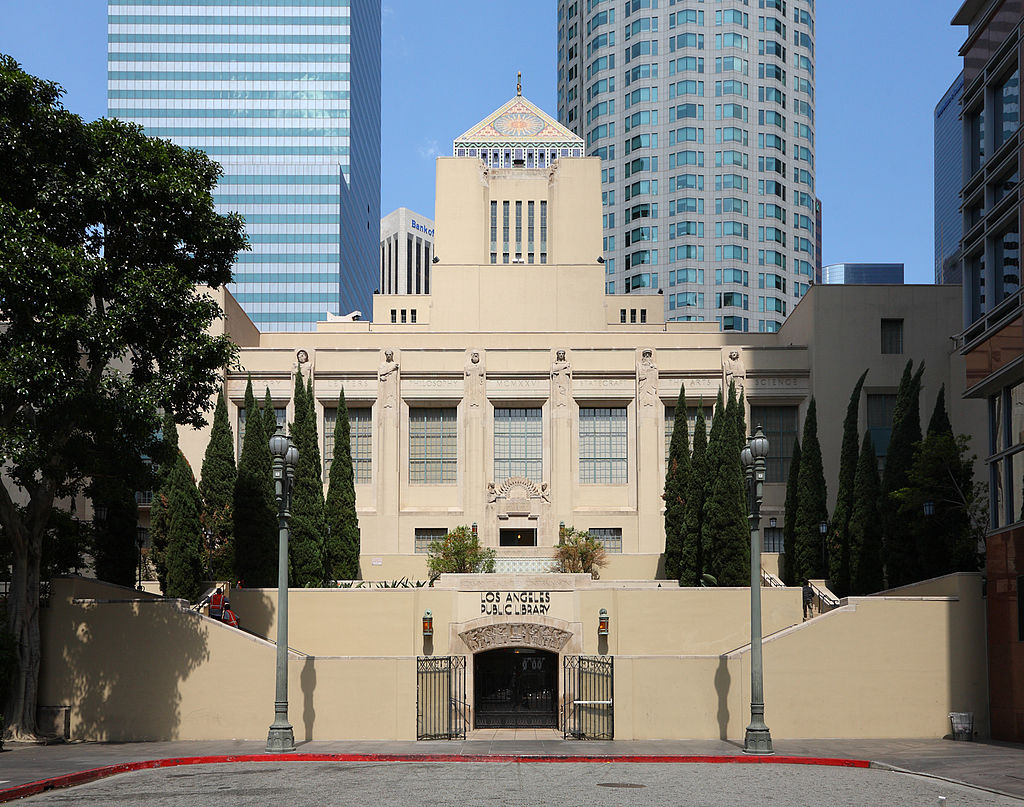
Media
The Los Angeles metro area is the second-largest broadcast designated market area in the U.S. (after New York) with 5,431,140 homes (4.956% of the U.S.), which is served by a wide variety of local AM and FM radio and television stations. Los Angeles and New York City are the only two media markets to have seven VHF allocations assigned to them.

The major daily English-language newspaper in the area is the Los Angeles Times. La Opinión is the city's major daily Spanish-language paper. The Korea Times is the city's major daily Korean language paper while The World Journal is the city and county's major Chinese newspaper. The Los Angeles Sentinel is the city's major African-American weekly paper, boasting the largest African-American readership in the Western United States. Investor's Business Daily is distributed from its LA corporate offices, which are headquartered in Playa del Rey.
There are also a number of smaller regional newspapers, alternative weeklies and magazines, including the Los Angeles Register, Los Angeles Community News, (which focuses on coverage of the greater Los Angeles area), Los Angeles Daily News (which focuses coverage on the San Fernando Valley), LA Weekly, L.A. Record (which focuses coverage on the music scene in the Greater Los Angeles Area), Los Angeles Magazine, the Los Angeles Business Journal, the Los Angeles Daily Journal (legal industry paper), The Hollywood Reporter, Variety (both entertainment industry papers), and Los Angeles Downtown News. In addition to the major papers, numerous local periodicals serve immigrant communities in their native languages, including Armenian, English, Korean, Persian, Russian, Chinese, Japanese, Hebrew, and Arabic. Many cities adjacent to Los Angeles also have their own daily newspapers whose coverage and availability overlaps into certain Los Angeles neighborhoods. Examples include The Daily Breeze (serving the South Bay), and The Long Beach Press-Telegram.
Los Angeles arts, culture and nightlife news is also covered by a number of local and national online guides like Time Out Los Angeles, Thrillist, Kristin's List, DailyCandy, Diversity News Magazine, LAist, and Flavorpill.
Transportation
Freeways

Among the major highways that connect LA to the rest of the nation include Interstate 5, which runs south through San Diego to Tijuana in Mexico and north through Sacramento, Portland, and Seattle to the Canada–US border; Interstate 10, the southernmost east–west, coast-to-coast Interstate Highway in the United States, going to Jacksonville, Florida; and U.S. Route 101, which heads to the California Central Coast, San Francisco, the Redwood Empire, and the Oregon and Washington coasts.
Airports
The main international and domestic airport serving Los Angeles is Los Angeles International Airport (IATA: LAX, ICAO: KLAX), commonly referred to by its airport code, LAX.
Other major nearby commercial airports include:
- (IATA: ONT, ICAO: KONT) Ontario International Airport, owned by the city of Ontario, CA; serves the Inland Empire.
- (IATA: BUR, ICAO: KBUR) Hollywood Burbank Airport, jointly owned by the cities of Burbank, Glendale, and Pasadena. Formerly known as Bob Hope Airport and Burbank Airport; the closest airport to Downtown Los Angeles; serves the San Fernando, San Gabriel, and Antelope Valleys.
- (IATA: LGB, ICAO: KLGB) Long Beach Airport, serves the Long Beach/Harbor area.
- (IATA: SNA, ICAO: KSNA) John Wayne Airport of Orange County.
One of the world's busiest general-aviation airports is also in Los Angeles, Van Nuys Airport (IATA: VNY, ICAO: KVNY).
Seaports
The Vincent Thomas Bridge is at Terminal Island
The Port of Los Angeles is in San Pedro Bay in the San Pedro neighborhood, approximately 20 miles (32 km) south of Downtown. Also called Los Angeles Harbor and WORLDPORT LA, the port complex occupies 7,500 acres (30 km2) of land and water along 43 miles (69 km) of waterfront. It adjoins the separate Port of Long Beach.
The sea ports of the Port of Los Angeles and Port of Long Beach together make up the Los Angeles/Long Beach Harbor. Together, both ports are the fifth busiest container port in the world, with a trade volume of over 14.2 million TEU's in 2008. Singly, the Port of Los Angeles is the busiest container port in the United States and the largest cruise ship center on the West Coast of the United States – The Port of Los Angeles's World Cruise Center served about 590,000 passengers in 2014.
There are also smaller, non-industrial harbors along Los Angeles's coastline. The port includes four bridges: the Vincent Thomas Bridge, Henry Ford Bridge, Gerald Desmond Bridge, and Commodore Schuyler F. Heim Bridge. Passenger ferry service from San Pedro to the city of Avalon on Santa Catalina Island is provided by Catalina Express.

